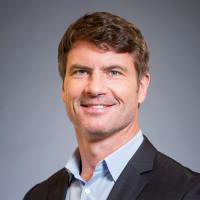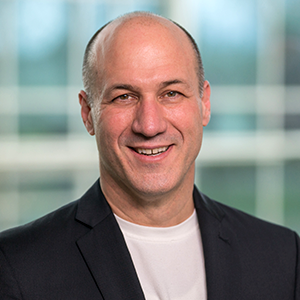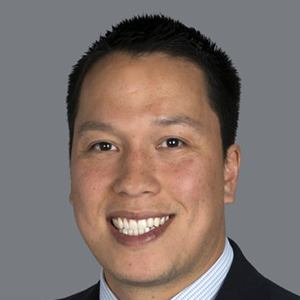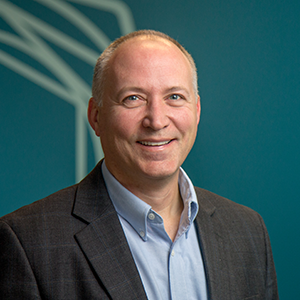Q: As Forcepoint's brand new CEO, what are your immediate priorities for the company and for your customers?
Matt Moynahan: First, I want to express how honored I am to have the opportunity to lead Forcepoint. This is an incredible company that combines a very unique set of assets from the former Websense, Raytheon Cyber Products and Stonesoft Next Generation Firewall (NGFW) businesses. Our portfolio of capabilities – including content security, insider threat protection, data loss prevention (DLP), cloud security, NGFWs, Web filtering and cross domain solutions – are unmatched. Together, they provide building blocks that will underlie a deep and broad cybersecurity platform and solution set for our customers.
That said, my immediate priority has been to partner with the Forcepoint team, our customers and partners to learn the business, listen and keep the company focused on helping our customers to solve their most critical cybersecurity challenges.
Since joining Forcepoint, I have traveled the globe meeting employees, partners, and customers. I have always considered talking with customers and partners to be a gift; one that provides insights that will help ensure we drive our company and product strategies in the most meaningful direction possible.
My immediate priority since day one has been to paint a vision of where Forcepoint is going and what we stand for – and empower the more than 2,300 employees to do great things. We have the knowledge that comes from serving more than 20,000 customers in 155 countries. We're built on a heritage of more than 90 years of innovation, experience and financial strength.
This is an once-in-a-lifetime opportunity to build a truly transformative company. The Forcepoint team, our partners and our customers are all excited about where we're headed. My job is to make sure we can all get there as fast as possible.
Q: Where do you see the biggest opportunities for Forcepoint going forward and why?
Moynahan: The cybersecurity market is highly fragmented, with thousands of companies offering point products that aren't working well enough given the threat environment. This creates an unmanageable environment for security practitioners, business leadership and Boards. We believe Forcepoint's portfolio and expertise in understanding data and end users presents an opportunity for us to address this complexity head-on for both commercial and government organizations. The world is more connected and, at the same time, more fragmented than ever – Forcepoint is well prepared to address this new reality.
We feel strongly that organizations should have the ability to focus their time and attention on whatever their primary mission may be. But, today, that's not possible; security concerns keep a constant, distracting hum in the system. We see a future where security is so deeply integrated into the fabric of businesses and governmental organizations that executive teams aren't up at night worrying about the next breach.
Our vision of the future is ambitious. And, to be clear, this is a long-term journey we are embarking upon. We will continue to invest in innovation and technology that provide the greatest value to our customers. We have the financial strength and cutting-edge research that comes with being backed by Raytheon, with the independence, agility and speed of a commercial software company.
At the end of the day, the phrase "trusted partner" means a lot to me – and to the whole team at Forcepoint. Whether it's our customers, channel partners, technology partners or other organizations, we want to be the cybersecurity company CISOs turn to in order to help solve their most challenging problems.
Q: There was no Forcepoint brand at last year's Black Hat USA. What do you want attendees at this year's event to know about Forcepoint and its combination of technologies from Websense, Raytheon and Stonesoft?
Moynahan: Forcepoint is a new brand with a unique vision. We are at a great point in our history. Forcepoint brings together three organizations – Websense, Raytheon Cyber Products and the Stonesoft business – each with a very proud heritage – and each with a very unique set of skills and capabilities.
The team from Raytheon brings critical assets, such as network segmentation/cross domain solutions as well as insider threat and advanced threat capabilities. Over the years, this team has earned the trust of some of the world's most demanding customers in the Federal government.
The team from Websense offers a proud history in Web content security and DLP, among other technologies. DLP, in particular, is a strategic asset when you consider the importance of protecting intellectual property. In fact, you might change the "D" in "DLP" to IP and call it IPLP – Intellectual Property Leak Prevention.
The team from Stonesoft brings an application-aware and activity-aware firewall, as well as mitigation capabilities across an ever-changing perimeter. But, it's much more than that.
Only a little over a year ago, Websense was a stand-alone entity, Raytheon Cyber Products sat within Raytheon's Intelligence, Information & Services (IIS) business and Stonesoft was part of Intel Security. Now these teams and technologies form one company: Forcepoint.
I came to Forcepoint to build the number-one pure-play cybersecurity company in the world. We have the opportunity to be among the most respected cybersecurity brands in the world. We are proud of our heritage, but even more proud of what we've built so far, and where we're just getting going.








